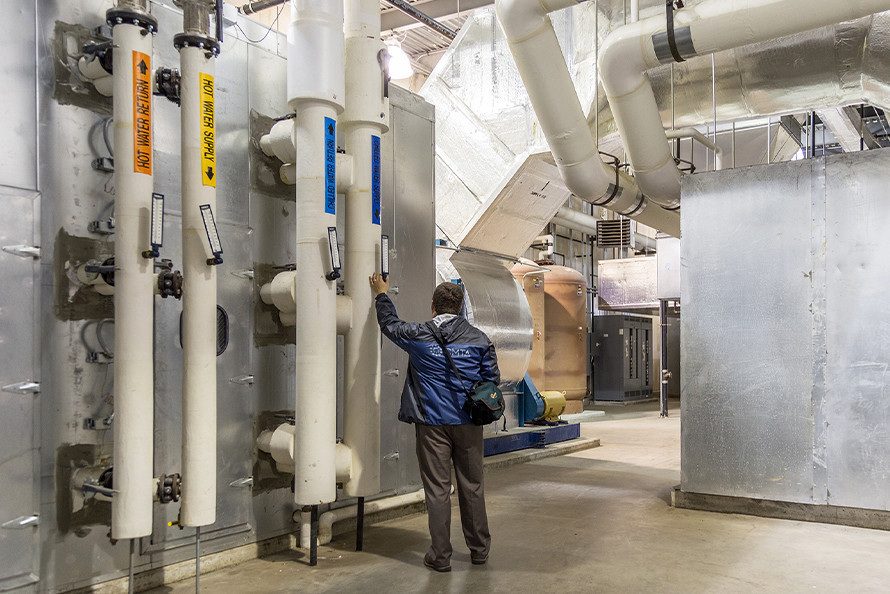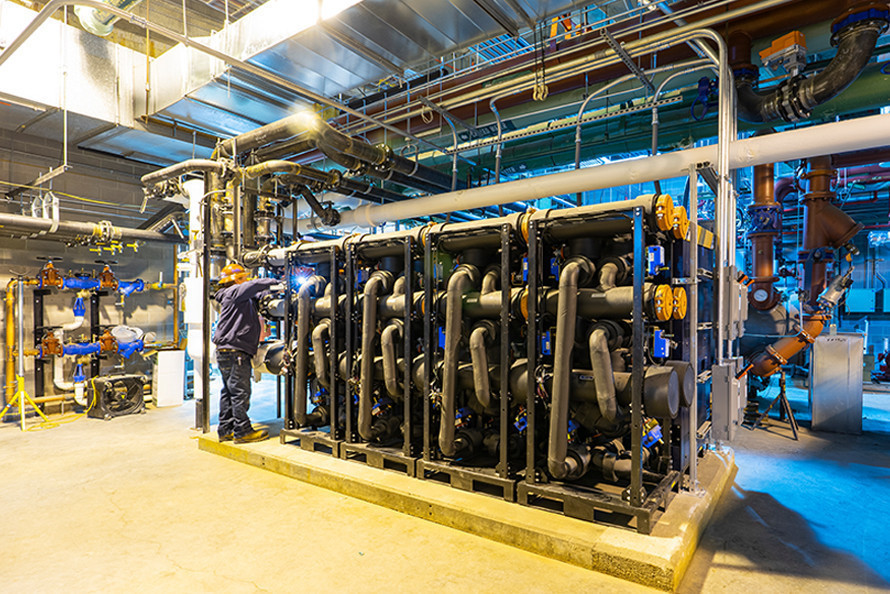Boston Medical Center Decarbonization
Multi-Year Energy Conservation Master Plan
CMTA is a national pioneer in the development of Zero Energy and Zero Carbon buildings, having engineered more than 16 million square feet of operational projects across the country. Our understanding of energy sources and potential alternative methods for the electrification of buildings leads to the cost-effective elimination of carbon emissions and energy costs. Achieving a sustainable future starts with our buildings.
Carbon emissions are directly correlated to energy use intensity (EUI): The higher a building’s EUI, the greater the building’s carbon emissions. Reducing the carbon footprint of a facility starts with drastically reducing its EUI below national averages to decrease or eliminate carbon emissions.
Carbon emission reductions are also dependent on the sources of energy available: Certain regions across the country have much higher emissions due to varying mixes of energy production methods including coal, natural gas, hydro, nuclear power, and renewables. The mix of generation methods will have different impacts on emission reductions for each project.
Decarbonization of a building refers to the process of reducing or eliminating greenhouse-gas emissions—including operational and embodied carbon—associated with its construction, operation, and maintenance. Operational carbon refers to the carbon emissions associated with the ongoing operation of a building, including the energy used for heating, cooling, lighting, etc. Embodied carbon, refers to the carbon emissions associated with the materials and construction of a building. However, the relative importance of operational and embodied carbon will depend on factors such as the location and climate, the type of materials used, and the expected lifespan of the building.
CMTA’s data-driven collaborative approach relies on an interplay of strategies that take into account the overall lifespan of the building, the client’s goals, and the technologies available. This approach includes, but is not limited to, the following strategies:

